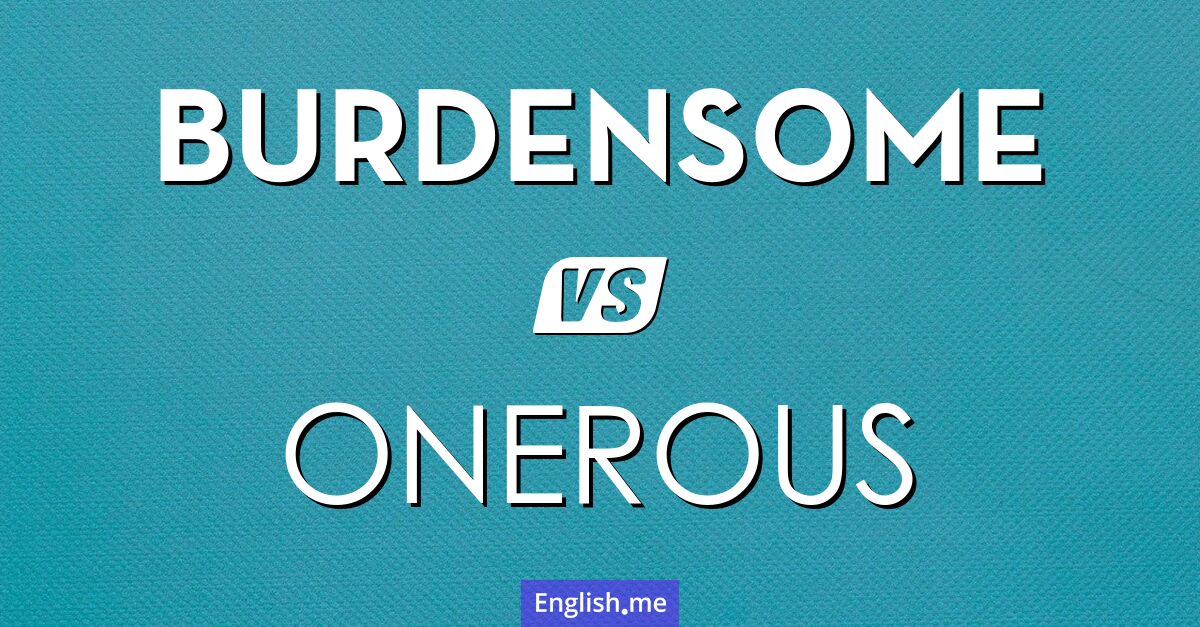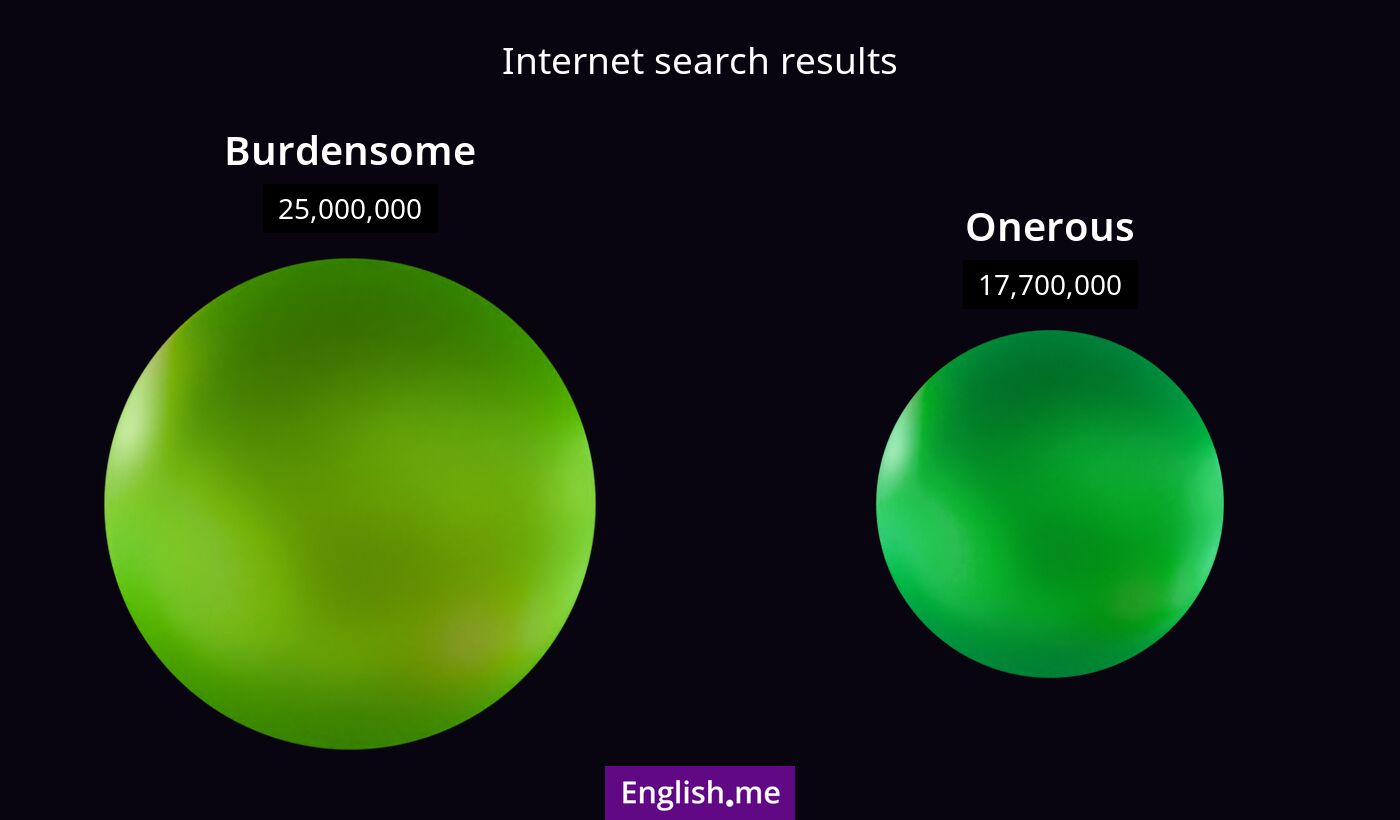Comparing the load: unpacking "burdensome" vs. "onerous"
Reviewed and edited by  Lloyd Cooper 19/10/2024, 11:49
Lloyd Cooper 19/10/2024, 11:49
English.me team member

 What is similar?
What is similar?
Both "burdensome" and "onerous" describe something that involves a lot of effort and difficulty, often causing stress or inconvenience.
 What is different?
What is different?
While "burdensome" typically emphasizes the emotional or physical weight or stress of a task, "onerous" often highlights the legal or formal obligations that make a task difficult.
 Which one is more common?
Which one is more common?

 Examples of usage
Examples of usage
Burdensome- The long commute became burdensome after a few months.
- Taking care of the large estate was burdensome for the family.
- Her responsibilities at work were becoming increasingly burdensome.
- The contract had onerous terms that were difficult to fulfill.
- Managing the legal requirements was an onerous task.
- The government regulations were considered onerous by the small business.

 English
English español
español française
française italiano
italiano deutsche
deutsche 日本語
日本語 polski
polski česky
česky svenska
svenska Türkçe
Türkçe Nederlands
Nederlands